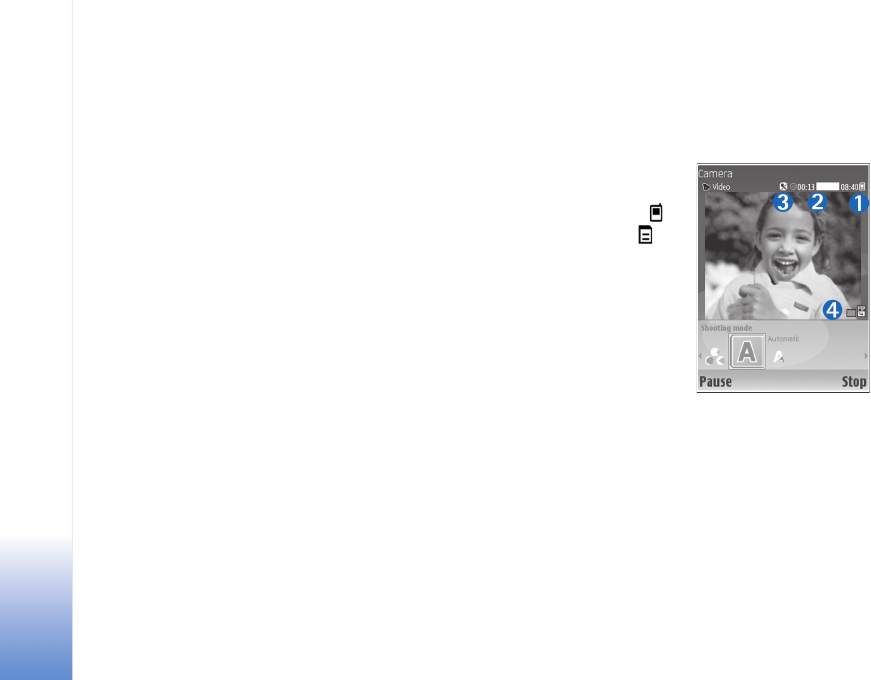
Camera
22
Copyright © 2006 Nokia. All rights reserved.
Depth
When taking pictures of landscapes, add depth to your
pictures by placing objects in the foreground. However, if
the foreground object is too close to the camera, it may
be blurred.
Lighting conditions
Changing the source, amount, and direction of light can
change photographs dramatically. Here are some typical
lighting conditions:
• Light source behind the subject—Avoid placing your
subject in front of a strong light source. If the light
source is behind the subject or visible in the display,
the resulting picture may have weak contrast, may be
too dark, and may contain unwanted lighting effects.
You can use the flash to add more lighting to shadows.
See ‘Flash’, p. 10.
• Sidelit subject—Strong side light gives a dramatic
effect but may be too harsh, resulting in too much
contrast.
• Light source in front of the subject—Harsh sunlight
may cause the subjects to squint their eyes. The
contrast may also be too high.
• Optimal lighting—Found in situations where there is
plenty of diffused, soft light available; for example, on
a bright, partially cloudy day or on a sunny day in the
shadow of trees.
Video recorder display
Video recorder indicators
show the following:.
• The device memory ( )
and memory card ( )
indicators (1) show where
the video is saved.
• The current video length
indicator (2) shows
elapsed time and time
remaining.
• The microphone indicator
(3) shows that the
microphone is muted.
• The file format indicator (4) indicates the format of the
video clip.
Record videos
If the camera is in image mode, to select video mode, select
Options > Video mode.
To select the secondary camera (for example, to include
yourself in the video), select Options > Use second. cam..


















